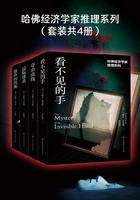Passing a summer several years since at Edgartown, onthe island of Martha’s Vineyard, I became acquaintedwith a certain carver of tombstones who had travelledand voyaged thither from the interior of Massachusettsin search of professional employment. The speculationhad turned out so successful that my friend expected totransmute slate and marble into silver and gold to theamount of at least a thousand dollars during the fewmonths of his sojourn at Nantucket and the Vineyard. Thesecluded life and the simple and primitive spirit which stillcharacterizes the inhabitants of those islands, especially ofMartha’s Vineyard, insure their dead friends a longer anddearer remembrance than the daily novelty and revolvingbustle of the world can elsewhere afford to beings of thepast. Yet, while every family is anxious to erect a memorialto its departed members, the untainted breath of Oceanbestows such health and length of days upon the people ofthe isles as would cause a melancholy dearth of businessto a resident artist in that line. His own monument,recording his decease by starvation, would probably be anearly specimen of his skill. Gravestones, therefore, havegenerally been an article of imported merchandise.
In my walks through the burial-ground of Edgartown—where the dead have lain so long that the soil, once enrichedby their decay, has returned to its original barrenness—in thatancient burial-ground I noticed much variety of monumentalsculpture. The elder stones, dated a century back or more,have borders elaborately carved with flowers and areadorned with a multiplicity of death’s-heads, crossbones,scythes, hour-glasses, and other lugubrious emblemsof mortality, with here and there a winged cherub todirect the mourner’s spirit upward. These productions ofGothic taste must have been quite beyond the colonialskill of the day, and were probably carved in London andbrought across the ocean to commemorate the defunctworthies of this lonely isle. The more recent monumentsare mere slabs of slate in the ordinary style, without anysuperfluous flourishes to set off the bald inscriptions.
But others—and those far the most impressive both tomy taste and feelings—were roughly hewn from the grayrocks of the island, evidently by the unskilled hands ofsurviving friends and relatives. On some there were merelythe initials of a name; some were inscribed with misspeltprose or rhyme, in deep letters which the moss and wintryrain of many years had not been able to obliterate. These,these were graves where loved ones slept. It is an oldtheme of satire, the falsehood and vanity of monumentaleulogies; but when affection and sorrow grave the letterswith their own painful labor, then we may be sure thatthey copy from the record on their hearts.
My acquaintance the sculptor—he may share that titlewith Greenough, since the dauber of signs is a painteras well as Raphael—had found a ready market for all hisblank slabs of marble and full occupation in lettering andornamenting them. He was an elderly man, a descendantof the old Puritan family of Wigglesworth, with a certainsimplicity and singleness both of heart and mind which,methinks, is more rarely found among us Yankees than inany other community of people. In spite of his gray headand wrinkled brow, he was quite like a child in all matterssave what had some reference to his own business; heseemed, unless my fancy misled me, to view mankind inno other relation than as people in want of tombstones,and his literary attainments evidently comprehendedvery little either of prose of poetry which had not atone time or other been inscribed on slate or marble. Hissole task and office among the immortal pilgrims of thetomb—the duty for which Providence had sent the oldman into the world, as it were with a chisel in his hand—was to label the dead bodies, lest their names shouldbe forgotten at the resurrection. Yet he had not failed,within a narrow scope, to gather a few sprigs of earthly,and more than earthly, wisdom—the harvest of many agrave. And, lugubrious as his calling might appear, he wasas cheerful an old soul as health and integrity and lack ofcare could make him, and used to set to work upon onesorrowful inscription or another with that sort of spiritwhich impels a man to sing at his labor. On the whole,I found Mr. Wigglesworth an entertaining, and ofteninstructive, if not an interesting, character; and, partlyfor the charm of his society, and still more because hiswork has an invariable attraction for “man that is bornof woman,” I was accustomed to spend some hours a dayat his workshop. The quaintness of his remarks and theirnot infrequent truth—a truth condensed and pointed bythe limited sphere of his view—gave a raciness to his talkwhich mere worldliness and general cultivation would atonce have destroyed.















